BLOG | EAST 17 ‘STAY ANOTHER DAY’ - The Christmas No.1's 30 Year Anniversary
By Phil Harding | Editor John Paul Palmer | 24 December 2024
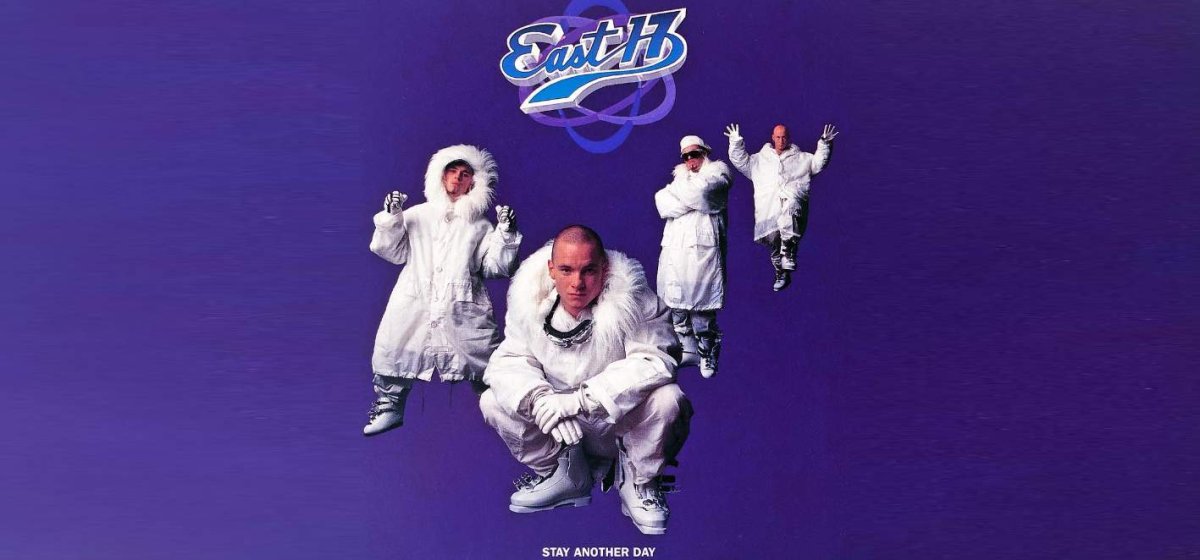
Phil Harding looks back in-depth at the process he and co-producer Ian Curnow went through to construct the now-30-years-old Christmas No.1 ‘Stay Another Day’ during, ironically, the hot summer months of 1994...
There comes a ‘defining moment’ in every successful music producer’s career and sometimes you may feel it at the time of the flow of the experience, and sometimes it may be at the time of a process of reflection. By mid-1994, it had been two years since East 17’s first UK hit ‘House Of Love’ and a string of UK top ten and top twenty singles followed, as well as the successful debut album ‘Walthamstow’. Ian Curnow and I did not study any ‘theory’ of ‘how to produce a No.1 Christmas record’, but we held an inner assurance and confidence that we could create something new and valuable with this production. It was clear as soon as we heard band member and songwriter, Tony Mortimer’s song demo, that ‘Stay Another Day’ had the potential to become a very special record. Tony has been interviewed extensively about the very personal inspiration for the song, the suicide of his elder brother, and the use of intentionally ambiguous lyrics – wishing someone would stay alive for just one more day whilst simultaneously being a love song about a relationship in the process of ending.
There comes a ‘defining moment’ in every successful music producer’s career and sometimes you may feel it at the time of the flow of the experience, and sometimes it may be at the time of a process of reflection. By mid-1994, it had been two years since East 17’s first UK hit ‘House Of Love’ and a string of UK top ten and top twenty singles followed, as well as the successful debut album ‘Walthamstow’. Ian Curnow and I did not study any ‘theory’ of ‘how to produce a No.1 Christmas record’, but we held an inner assurance and confidence that we could create something new and valuable with this production. It was clear as soon as we heard band member and songwriter, Tony Mortimer’s song demo, that ‘Stay Another Day’ had the potential to become a very special record. Tony has been interviewed extensively about the very personal inspiration for the song, the suicide of his elder brother, and the use of intentionally ambiguous lyrics – wishing someone would stay alive for just one more day whilst simultaneously being a love song about a relationship in the process of ending.
Released on 21 November 1994, ‘Stay Another Day’ entered the UK Singles Chart at No.7 and then rose to No.1 the following week, achieving five weeks at No.1 (and similarly across Europe), including being the No.1 for Christmas in 1994. It was the only UK No.1 that East 17 achieved, but by being ‘Christmas No.1’, it has positioned the group firmly in the UK ‘pop hall of fame’. Tony Mortimer also won the prestigious ‘1994 Songwriter Of The Year’ Ivor Novello Award for the song. In 2020, The Guardian UK newspaper positioned it at No.41 in their ‘100 Greatest UK No.1s’ article as, “One of the greatest Christmas No.1s of all time... a triumph of emotional candour”.
STARTING WITH THE ARRANGEMENT AFTER HEARING TONY’S DEMO
Tony supplied us with a ‘demo’ recording of the song that he had put together with the help of our colleague, Rob Kean. Strangely, it had ‘Phil Collins-style’ drums all over it, which Ian and I thought a bit over-the-top for a gentle ballad.
Ian Curnow’s first job was to unravel the chords and arrangement and look for musical improvements to make it more sophisticated. Ian recalls: “Tony asked me for it to be ‘massive and Beethoven’, so I offered him [composers], Mahler, Carl Orff (‘Carmina Burana’) and Gustav Holst, and he just said ‘Yeah, great!’. I don’t think he really knew who they were, but he was happy to get something big and over the top. I didn’t need asking twice to be let off the lead and throw in the kitchen sink!”
Well, when someone gives Ian Curnow an inch on an orchestral or even a song arrangement, he takes a mile. Tony’s requests were a licence to let Ian loose and I certainly wasn’t going to hold him back. I had no idea what Tom or the record company were going to think of this, but as far as we were concerned, we were given a free hand of encouragement by the songwriter and bandleader, so off we went...
A notable part of Ian’s development of the arrangement was often creating a ‘piano introduction’ for the songs which Tony would then have to mime to for performances and the video (an earlier example is the 1993 song ‘It’s Alright’). A running joke was that Ian would ‘test’ Tony by making the piano intros ever more complex to see whether Tony could cope. Ian: “Not so much the case on ‘Stay Another Day’, but we used to play ‘a game of piano intros’, especially earlier on. Tony would be the first to admit he wasn’t exactly a virtuoso pianist back then (and neither am I!) but we did rather like our piano intros. So once I’d recorded it, of course Tony had to then learn to mime to it for videos and TV. So I’d keep coming up with things that were more and more tricky for him to learn each time, just for fun – and to be fair, he did a pretty good job of it!”
Once Ian had been through the song’s ‘musical’ arrangement, we went through the arrangement ‘for production’ to make it as ‘commercial’ as possible. This is a typical pop producer’s job – squeeze every hook out of the song as much as possible and maximise all of the catchy phrases and sections. We quickly realised that this could have a ‘mega vocal chorus’, that with our session singer Trevor ‘Tee’ Green and all of the band members given individual parts to sing, could really blow everyone away.
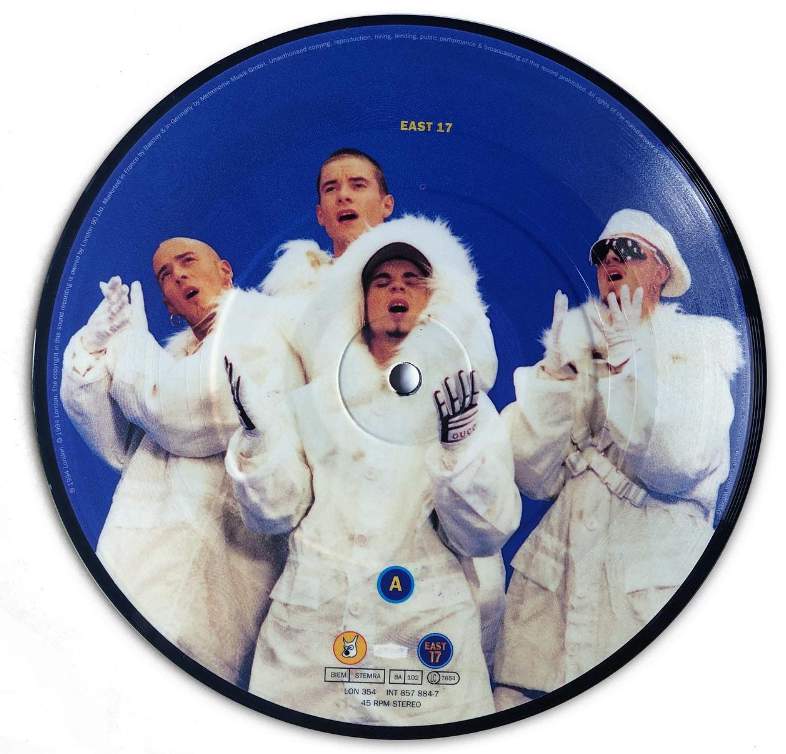
VOCAL RECORDING
First up was the vocal arrangement and recording process that I describe below, which is typical of pop producers like us working with boybands in the 1990s...
1. Book your favourite session singer for an afternoon and set about mapping out the vocal arrangement.
2. This is done before the band come in, so we would require the session singer to record a ‘guide lead vocal’ to work against.
3. Start recording the chorus harmony parts at the first chorus. Each part to be tracked (re-recorded) at least twice to allow you to ‘pan’ each part in stereo. In the case of ‘Stay Another Day’, we recorded each of Tee’s chorus parts four times to make it ‘thicker’. We would then copy those backing vocals to each chorus. No need to sing all those parts again unless there is a key change, which is generally the last chorus. Usually, takes three and four of each part would either be sung ‘softer’ or ‘harder’ than takes one and two, to get a difference in sound. This adds to the vocals sounding ‘thicker’ and ‘fatter’.
4. Go back across the verses, bridges and middle section to see if any other lines need harmonising – often just ‘a third’ harmony above the lead, but regularly with boybands, there will be block-backing-vocal ‘answers’ in the verses and other sections. This is to keep the other band members busy during TV and video performances.
5. Having recorded everything the producers might have been planning, you would then give the session singer the opportunity to see if they have any further backing vocal ideas that might have struck them whilst spending all afternoon singing on one 3-4 minute pop song. Tee always had plenty of extra ideas that we would give him time to try. In the case of ‘Stay Another Day’, most of the backing vocal ideas in the verses were Tee’s. We had one last backing vocal idea up our sleeve for the mega ending that Tony had given us a free rein to experiment with, and that was a ‘counter-melody’ hook to come in from the third repeat chorus of the outro. That idea was to sing “stay another day, stay, stay another day”. This had the first “stay” and “day” sung really ‘long’, the second “stay” sung ‘short’, then the last three words sustain the line out so that it became a single repeated melody line (no harmonies) that lasted the full four-bar cycle of the chorus chords.
6. A day or so later, once you had edited and copied all of the above, we bring either the whole band in, or preferably the main lead vocalist, for the bulk of the day to get the lead vocal recorded throughout the whole song, usually double-tracked on the chorus parts to add thickness. Then, either later in the same day or maybe even the next day, each other boyband member chooses (or is recommended) a chorus harmony part and records their version of it twice, singing along, often in solo, with what you have recorded with the session singer. In the case of ‘Stay Another Day’, we had to find a part for Tony to sing, as there was no rap section in the song, so he sings the “stay now” line that leads us into each chorus. Talking some years later in 2014, Tony remembered that Ian and I gave him a shot at singing the whole song. It was clear to him, and us, that this wasn’t going to work, but at least we got the “stay now” line out of him.
7. You will then need at least half a day to compile, edit, time and tune what you have recorded with the band. Autotune software arrived in around 1998 – too late to help us with most of the East 17 recordings – but Autotune and Melodyne have been a big help in the vocal editing process ever since. These vocal processes are also a big help in the recording process because you can get a great ‘creative performance’ on a take from a vocalist and you now know that even if it is slightly ‘out of time’ or slightly ‘out of tune’, it can be ‘re-timed’ or ‘re-tuned’.
8. The final part of the process is then during the mix, where I would balance the band backing vocals about 5dB below the session singer backing vocals – just enough to add some character and fullness.
As you can see from the above, the vocal recording and editing process of a typical 1990s boyband song would stretch across at least three days. Some people would laugh at us when they listen to our typical 1990s pop tunes and we would say that was at least a five-day recording process. My mixing stage would be at least a day and a half on top of that!
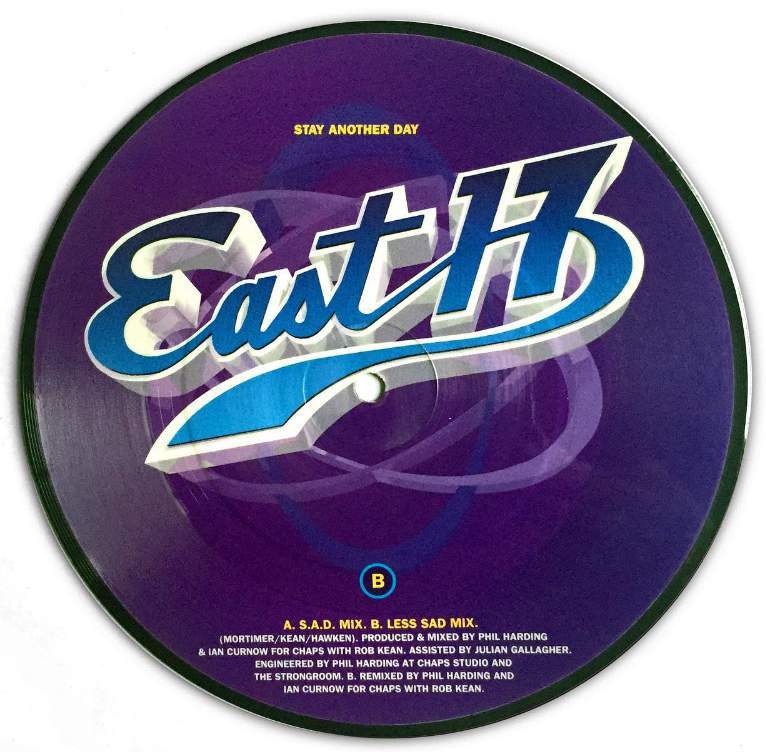
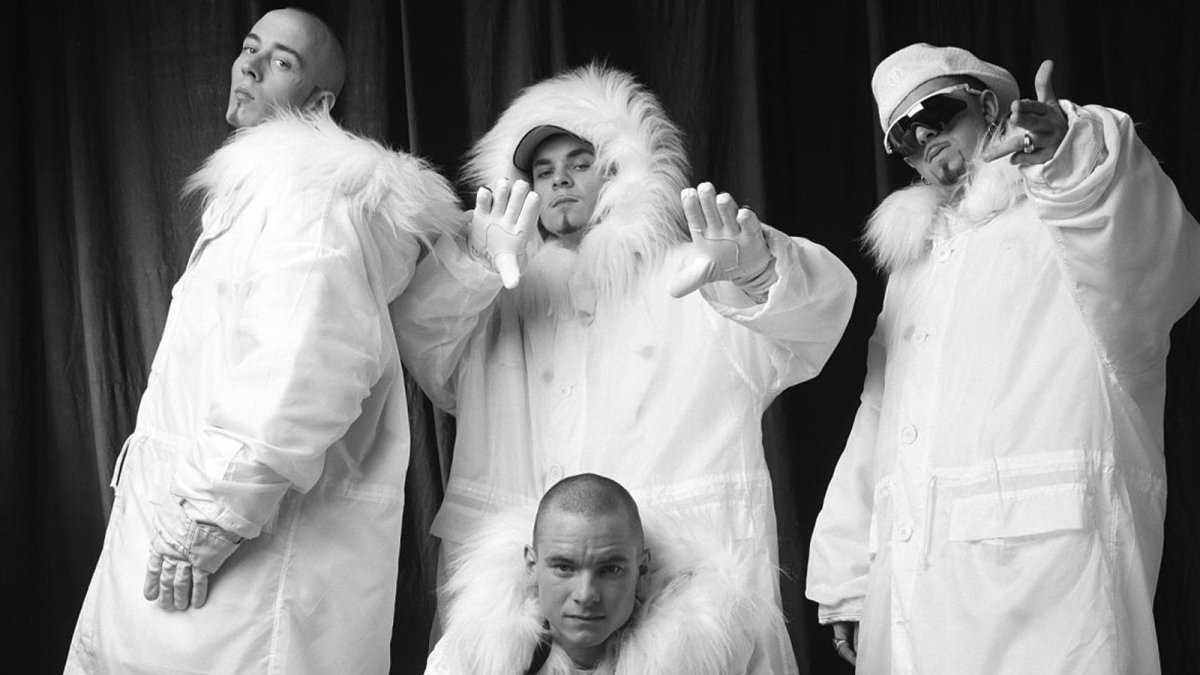
SONG ARRANGEMENT
Here is a full breakdown...
Here is a full breakdown...
Intro (5 bars)... The first 5 bars are a typical P&E introduction, with a big stereo ‘pad’, timpani drum roll for dramatic effect and warning of what’s to come, and a fairly complex acoustic piano part from Ian. By the end of the intro we had already introduced some of the programmed orchestra features, such as pizzicato violins and strings swelling into the intro chorus.
Intro chorus (8 bars)... The tried and tested pop formula of having a chorus at the beginning of the song, which I’ve always liked ever since we commonly used this at PWL Studios in the 1980s, is here again in a full 8-bar version of the chorus. It has everything in that you will also hear on chorus 1 after the first verse – all of the backing vocals, most of the orchestration and other backing instruments. By bar 5, we introduce the keyboard ‘choir’ samples to give the second half a ‘lift’, therefore justifying the full 8-bar length.
Verse 1 (12 bars)... Vocals / piano / minimal strings (mainly just cellos). This takes us right down to an ‘intimate’ verse, with Brian Harvey’s vocal right up front in the mix. It was quite hard work in the recording process getting such an intimate pop vocal out of Brian. Tony recalled: “Brian threw down the headphones after completing the vocals to this song and said ‘don’t ever ask me to sing this pop shit again!’”. Backing vocalist, Tee Green, had the idea to add some subtle harmonies behind Brian on the second half of the first and third lines of each verse, and this helps to both give the verses ‘contrast’, and it gives the rest of the boys in the band something to join in on for their TV and video performances. This is always a good idea for boybands, as it allows the cameras to focus on multiple members throughout the song. The first time these harmony-backing vocals appear, they are just ‘two parts’. By the last four bars, they become ‘three-part’ harmonies.
Chorus 1 (9 bars)... Enters at 1’34”, which is a little late for most pop songs, but as we have had a full 8-bar chorus at the intro, this works fine. The only real difference between this and the intro chorus is an extra bar added at the end to allow an extra-dramatic ‘choir swell’ and a ‘piano riff’ from Ian.
Verse 2 (9 bars)... Vocals / piano / strings again, plus the backing vocals as in verse 1. There are two major differences in verse 2 compared to verse 1. Firstly, the last backing vocal is a beautifully subtle ‘counter-line’ to Brian. Again, this was another idea added in by Tee Green. It flows into the added bar at the end of the verse to allow for the second major difference, a ‘bigger orchestral build up’ into chorus 2. This turns out to be our last and extended chorus, as there was no middle 8 or bridge written into his demo presented to us.
Chorus 2 and outro chorus (16 bars)... We go into this chorus with a timpani roll that ends on an orchestral cymbal roll and splash. We also add a church organ in this chorus. On the repeat of the chorus’s 8-bar cycle on the radio version, I savagely edit to the point that is on the extended version 8 bars later, where we introduce a completely new backing vocal line to give the chorus some ‘vocal variation’ to the previous choruses. This is a unison line sung by Tee Green and tracked 4-6 times to make it audible and thick enough behind the wall of vocals already going on in the main chorus. We probably got Brian to ‘track’ this to Tee, to give it some ‘band character’.
Ending (4 bars)... This falls out of the extremely crowded last chorus that is bursting with drama and energy, as Ian had built the orchestral arrangement to the maximum (as originally requested by Tony). Timpani, orchestral cymbals, gongs, choirs, the ‘pealing’ Christmassy tubular bells all finish their patterns and come to a halt like a steam train and the end of the track.
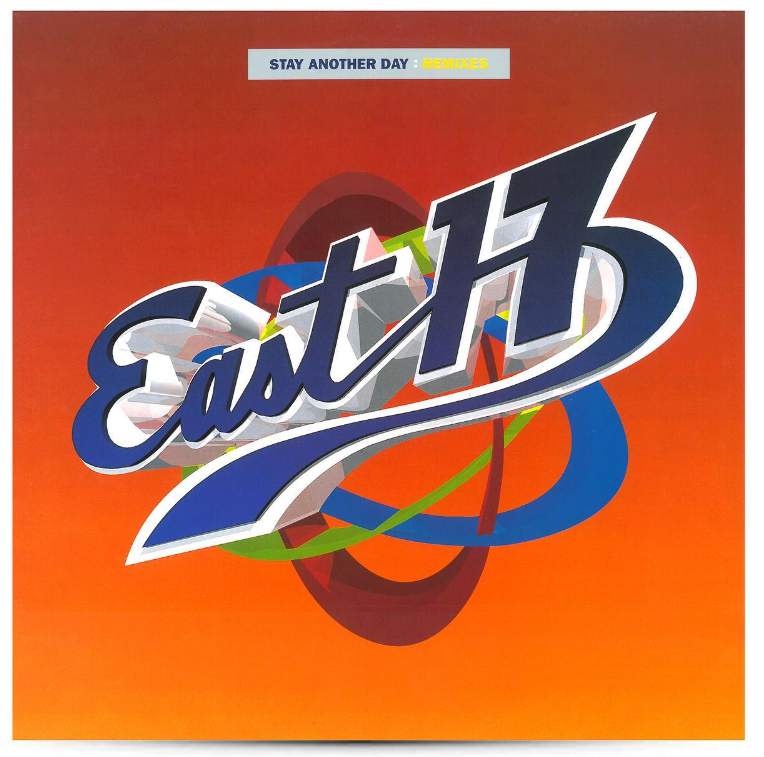
MIXING
The mixing story of ‘Stay Another Day’ was a particularly unusual one. There were up to 60 or more audio tracks of vocals. They would have been ‘pre-mixed’ down to 8-10 tracks in preparation for the main mixing stage. That was even before all the instrument sounds, so quite a task! We also had recorded onto the final 48-track multitrack tapes for the mix, at Tony’s request, the ‘Phil Collins-style’ programmed drums and a matching bass part. I was particularly keen for manager Tom Watkins and London Records to hear what we had recorded on ‘Stay Another Day’ (none of whom had been to the studio during the recording process) before Ian and I went on our annual summer holiday for two weeks at the end of August 1994. Foolishly, I had only given myself one day in Strongroom Studio 2 to complete this huge task. Literally, the following day, I was taking my family on holiday to Cornwall.
The mixing story of ‘Stay Another Day’ was a particularly unusual one. There were up to 60 or more audio tracks of vocals. They would have been ‘pre-mixed’ down to 8-10 tracks in preparation for the main mixing stage. That was even before all the instrument sounds, so quite a task! We also had recorded onto the final 48-track multitrack tapes for the mix, at Tony’s request, the ‘Phil Collins-style’ programmed drums and a matching bass part. I was particularly keen for manager Tom Watkins and London Records to hear what we had recorded on ‘Stay Another Day’ (none of whom had been to the studio during the recording process) before Ian and I went on our annual summer holiday for two weeks at the end of August 1994. Foolishly, I had only given myself one day in Strongroom Studio 2 to complete this huge task. Literally, the following day, I was taking my family on holiday to Cornwall.
As we were approaching midnight on the session, Ian had already come over and spent some time helping me with the balance of the huge amount of orchestral parts he had programmed and I then sent him home. It was becoming clear to me that I wasn’t going to complete the task. My problem was that I could balance the vocals and keyboards ‘to the orchestra’, I could balance the vocals and keyboards ‘to the drums and bass’ but I couldn’t balance all of them together. It sounded a chaotic mess with the drums and the orchestra in together. Ian and I had disliked the drums from day one, but had persevered with them for Tony’s sake! So, at about 3am, I said to the studio assistant, ‘Let’s lay down the version with keyboards, vocals and orchestra, send it to Tom Watkins and London Records tomorrow, and I’ll deal with the ‘full version’ with drums and bass when I return from holiday.’ We put that version onto half-inch analogue two-track and also to DAT tape.
On our return from holiday, we had more mixing time booked in Strongroom Studio 2 to complete ‘Stay Another Day’ and other tracks we had produced for the album. I checked in with Tom Watkins on our return, and amongst the first things he said to me was that Tracy Bennett and everyone else at London Records LOVED ‘Stay Another Day’ as I had mixed it before our holiday. I said to Tom that it wasn’t finished and I still had to add the drums and bass to the mix. His reaction was “Don’t you dare touch it, Phil! This is being planned as a Christmas single and everyone feels it will be a massive hit EXACTLY as it is!”. All that was needed was a radio edit to shorten the end and an up-tempo club mix (if we could make that work).
It was tempting to go back into Studio 2 to recall the ‘Stay Another Day’ mix and add those final elements, but I resisted it. I remember the band M People being in Studio 1 across the corridor from Studio 2 and asking me what I was working on. They were shocked when I said (in August) that I was mixing a Christmas single for East 17. It did seem strange to be doing that in the summer, but such is the forward planning of the music industry. Ian and I hadn’t really understood why everyone was saying ‘Stay Another Day’ would be a good Christmas single, and it took Tom to point out that it was the tubular bells we had added to the outro (at Tony’s request) making it sound like the Christmas bells used on some songs to celebrate the arrival of Christmas.
Some months later, we were in the studio with Tom working on the ‘Deuce’ album. He excitedly told us that Tracy at London Records was advising everybody to place an early bet with the bookies for ‘Stay Another Day’ to be the 1994 Christmas No.1. Ian and I are not gambling people, but we decided to send our assistant out to put a bet on whilst the odds were still good at something like 14-1. Much to our surprise, it made Christmas No.1 and remained there for five weeks. For Ian and me, it was our biggest production to date, and we still receive producer royalties for catalogue sales of ‘Stay Another Day’ to this day, mainly due to the many Christmas compilation CDs that it has appeared on over the years.
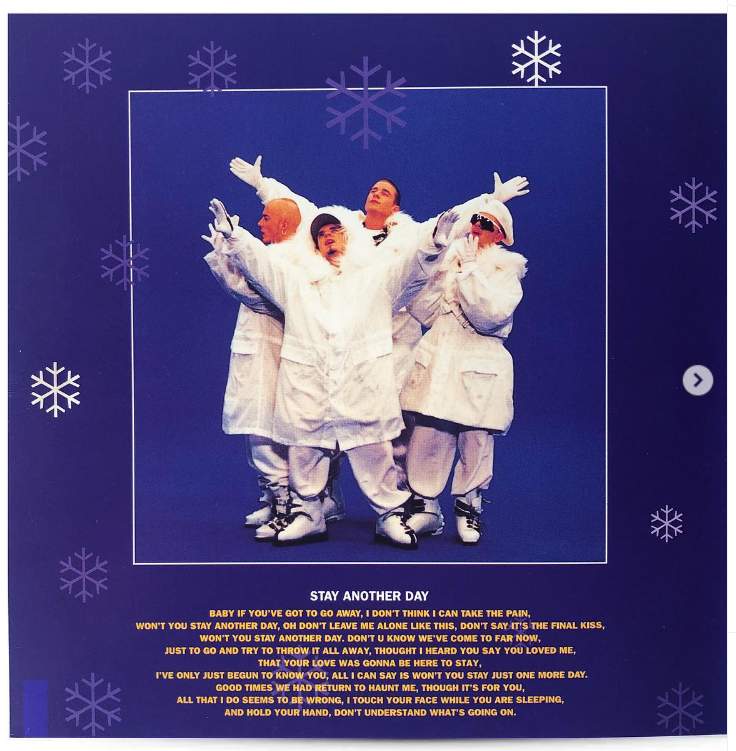
ATMOS MIX
In the autumn of 2022, I was approached by London Records to do a Dolby Atmos mix of ‘Stay Another Day’. ‘Dolby Atmos’ is a new surround sound technology initially developed for cinemas and home cinema. I turned it down on the basis that I had no experience of mixing in that format, but I offered to be ‘Executive Producer’ and suggested that my friend, producer and engineer Gary Bromham, would be a good choice.
In the autumn of 2022, I was approached by London Records to do a Dolby Atmos mix of ‘Stay Another Day’. ‘Dolby Atmos’ is a new surround sound technology initially developed for cinemas and home cinema. I turned it down on the basis that I had no experience of mixing in that format, but I offered to be ‘Executive Producer’ and suggested that my friend, producer and engineer Gary Bromham, would be a good choice.
First up was to find out if London Records had found the original 48-track ‘analogue’ multitrack masters ready to transfer to the ‘digital’ multitrack file system that we all use now – WAV files. Here began the first problem and hurdle to jump through, because basically, the original master multitracks were lost! All they could find were two analogue tapes that were: A) a ‘pre’ master 24-track ‘slave’ tape that was an earlier version of the song arrangement, but at least it had all of the vocal tracks, and B) a 24-track multitrack tape used for an appearance by East 17 on the BBC’s ‘Des O’Connor Tonight’ show!
I combined the material from these two tapes, plus some stereo DAT tapes from my own archives that contained the master vocals and backing vocals. Gary did an excellent job of getting all of the transferred audio to sync back together, and he delivered a new stereo mix, as well as an incredible Dolby Atmos mix that everybody was delighted with, especially London Records.
REFLECTIONS IN 2024
REFLECTIONS IN 2024
Recent press and media coverage for the 30th Anniversary and re-issue of ‘Stay Another Day’ in 2024 has been both widespread and tremendous. Tony Mortimer has appeared on many TV programmes, including the BBC’s ‘Breakfast’, talking about what inspired the writing of the song, through to how he feels about it, 30 years on, after it returns to the spotlight every Christmas. An article in The Guardian UK Newspaper featured interviews with Tony Mortimer and Phil Harding, focussing on the making of the record back in 1994.
The original recording has had over 65 million plays on Spotify, and over the years, the song has been covered and performed by a long list of artists, including:
Girls Aloud(2002), Kylie Minogue (2016), The Wanted (2021), Jorja Smith (2023) and Blue with Tony Mortimer
(2024). Ian and I also revisited the song in 1996 with American band, Intrigue
All in all, 2024 has been a good chance for me to reflect on the success of the first No.1 UK chart single that Ian Curnow and I produced. The fact that it spent 5 weeks at No.1 and is still played every Christmas on UK radio is really heart-warming and a testament to the quality of some of the work that Ian and I produced throughout the 1990s.